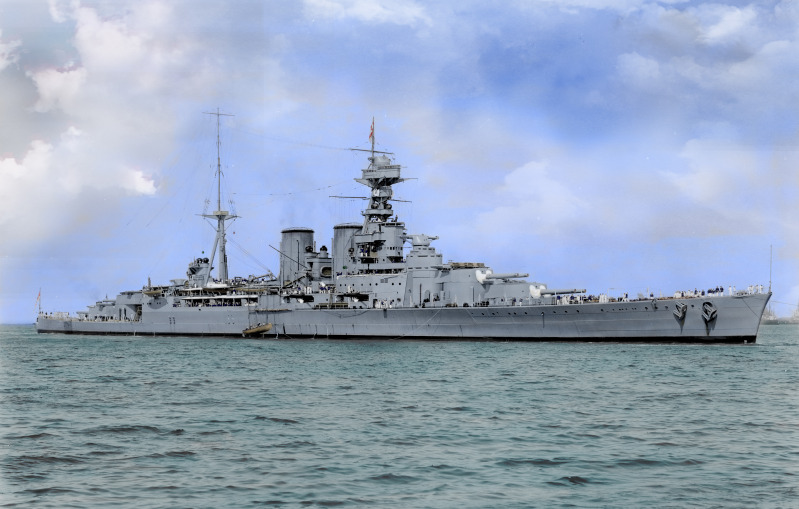Here is some extremely cool color footage of HMS Hood, the last battlecruiser built for the Royal Navy. She was the only one of the Admiral-class battlecruisers, which were ordered in 1916, that was completed. Her design was revised and updated with the lessons learned after the Battle of Jutland.
The Battle of Jutland, which took place on May 31st and lasted for one day, has often been cited as one of the greatest naval battles of WWI.
Even though Imperial German Navy was a well-prepared force during WWI, with a considerable amount of powerful vessels, it was still no match for the traditional European naval superpower – Great Britain. That is why the Germans hoped to lure a large portion of the British Grand Fleet near the coast of Jutland Peninsula, gaining slight tactical advantage through entrapment.
The punching fist of the German fleet consisted of 16 dreadnought-class battleships. Though these were a considerable force at the time, they were still no match to the 28 dreadnoughts that the British had in their possession. This is why the Germans decided on a risky “divide and conquer” tactic; they would conduct raids in the Northern Sea and bombard the English coast, thus aggravating the British Navy, forcing them to commit reckless attacks, without enough strategic planning.
The battle raged all night, with multiple casualties on both sides. Even though the Germans were arguably winning the battle, their numbers were just not enough to take on the British Grand Fleet. The two sides eventually went their separate ways, both with great losses.
The British fleet suffered heavier losses than the Germans ― the death count for the entire battle reached 9,823 men, of which 6,784 were British and 3,039 German. No dreadnoughts were destroyed on either side during the battle. Nevertheless, it was obvious that the Grand Fleet would recover. That wasn’t the case for the Germans.
HMS Hood
When the massive HMS Hood was completed, she was the largest and most powerful warship in the world, the pinnacle of her era which ended less than 20 years later when the battleships and battlecruisers were replaced as queens of the oceans by aircraft carriers.
By the time the second world war broke out, advances in naval gunnery had reduced Hood‘s usefulness. Her scheduled upgrade and rebuilding for 1941 had to be canceled; she was needed on the high-seas immediately.
HMS Hood spent the first months of the year hunting for German commerce raiders early in the war and later participating as flagship in the sinking of the French fleet at Mers-el-Kebir, when the British sank the huge French fleet to stop if from falling into the hands of the Germans. Debate still rages about this episode, but the fact remains that the French fleet did NOT fall into German hands, and this undoubtedly made a difference to the war.
When she was tasked, together with the battleship HMS Prince of Wales to intercept and sink the German battleship Bismarck, and the heavy cruiser Prinz Eugen, disaster struck.
Having located the enemy ships in the Denmark Straight, one of the last ship versus ship engagements of the second world war was fought out. Unfortunately for the British, they were not the ones who won this battle.
On May 24th, 1941, HMS Hood was hit by several shells fired from the Bismarck. A gigantic jet of flame burst out near the mainmast which was quickly followed by a magazine explosion which totally destroyed the aft part of the ship and broke her back.
HMS Hood sank in less than three minutes with a catastrophic loss of life; of the 1418 men aboard, only three survived.
Video
This color footage is from happier days when she sailed the seas with perceived impunity in June 1939.
 Image Credit"
title="
Image Credit"
title="